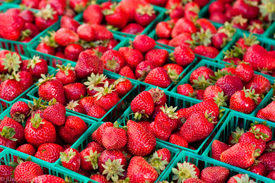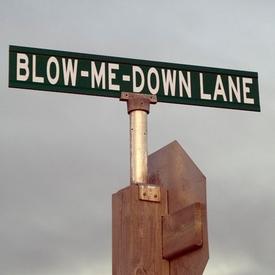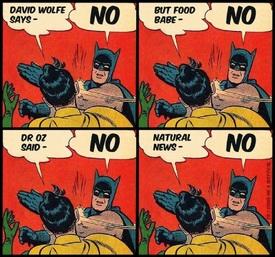Portioning recipes?

jdbrrw
Posts: 16 Member
Hey guys, I have a question.
So I bought a food scale around three weeks ago and have been using it to weigh everything. It's helped me a lot.
My question is about doing portion sizes for recipes.
I don't have a problem with weighing out the ingredients I'm using...but when I have the finished product, what's the best way to figure out how much my serving size is?
Say I'm cooking a meal that has four servings and I just want to eat one.
Should I just try and add up the weight of all the ingredients and then divide it by 4, and weigh out that much?
Is that even feasible? Or is there a better way?
What if the recipe has chopped meat or veggies in it...won't there be some portions with more meat/veggies than others?
So I bought a food scale around three weeks ago and have been using it to weigh everything. It's helped me a lot.
My question is about doing portion sizes for recipes.
I don't have a problem with weighing out the ingredients I'm using...but when I have the finished product, what's the best way to figure out how much my serving size is?
Say I'm cooking a meal that has four servings and I just want to eat one.
Should I just try and add up the weight of all the ingredients and then divide it by 4, and weigh out that much?
Is that even feasible? Or is there a better way?
What if the recipe has chopped meat or veggies in it...won't there be some portions with more meat/veggies than others?
1
Replies
-
I weigh the whole finished product (minus the dish), and divide the whole thing by the amount of servings in it. I make a lot of one pot meals and just make sure I get an even distribution of veggies/grains/beans in each serving.3
-
I guess I just don't know how that would work with some stuff...like if I make a casserole or something that's kind of large and has a lot of servings, I'm not sure how I would weigh that on my scale.
The measurements of my scale are about 7 1/2" L x 5 1/2" W
Can a larger dish that extends over the sides of the scale quite a bit be accurately weighed on it?
Sorry, I'm a bit new to all of this! Thanks for your help.0 -
I weigh my dish before adding the ingredients, then weigh it afterward and subtract the total from the weight of the dish to get a total amount of ingredient weight. Then I'll divide it into the amount of portions it contains and use that number of grams or ounces when serving it.0
-
You can weigh the whole thing after cooking and divide by the same number of servings you used to calculate it. You'd probably have to put a pan or plate on your scale, zero it, and then transfer it to that to weigh it. Or you could weigh it in it's cooking dish, then transfer it to left over containers and your plate and then weigh the cooking dish again and subtract it from the original. That gives you the weight of the food.
Now, if you are going to eventually be eating the whole thing (over several days or weeks if it's frozen and not sharing much of it with other people), I think it's fine to eyeball it. It'll all even out in the end.1 -
I guess I just don't know how that would work with some stuff...like if I make a casserole or something that's kind of large and has a lot of servings, I'm not sure how I would weigh that on my scale.
The measurements of my scale are about 7 1/2" L x 5 1/2" W
Can a larger dish that extends over the sides of the scale quite a bit be accurately weighed on it?
Sorry, I'm a bit new to all of this! Thanks for your help.
As long as the dish doesn't touch anything else and it doesn't exceed the weight limits of the scale, there's nothing wrong with that. Of course, you need to zero out the scale with the empty dish sitting on it before you fill it with the casserole.0 -
Honestly? I guesstimate.
I've tried to do like the previous people suggested and it consumed WAY too much time and helped create an obsession down to the littlest gram.
Now, if I have lasagna (for example), I know there are 12 servings in a large dish I make so I cut it into 12 pieces then eat one piece. I put it into my recipe maker at the beginning (still weight things going into it, just not the final product) and put that there is 12 servings. Log how much you eat.
For soup-like things, I usually base servings on cups.1 -
Why is everyone weighing casseroles? Just weigh and measure all the ingredients in the recipe, then use My Fitness Pal's recipe function. If you end up eating three servings when you have the recipe set for four, just edit the recipe. Or enter 1.3 servings in your diary.3
-
What MrsSchimmy does.0
-
Why is everyone weighing casseroles? Just weigh and measure all the ingredients in the recipe, then use My Fitness Pal's recipe function. If you end up eating three servings when you have the recipe set for four, just edit the recipe. Or enter 1.3 servings in your diary.
I often cook in bulk, because I am feeding 5 people and I like leftovers. When I have a gigantic pot of rice and beans that serves 16 people, it's pretty hard to judge what one serving is without weighing it.
2 -
I weigh all the ingredients and log them in the recipe
Then I weigh the whole cooked dish and divide it into 100g servings so I can take any quantity of it I want and just weigh it to get a more accurate calorie count3 -
Laurend224 wrote: »Why is everyone weighing casseroles? Just weigh and measure all the ingredients in the recipe, then use My Fitness Pal's recipe function. If you end up eating three servings when you have the recipe set for four, just edit the recipe. Or enter 1.3 servings in your diary.
I often cook in bulk, because I am feeding 5 people and I like leftovers. When I have a gigantic pot of rice and beans that serves 16 people, it's pretty hard to judge what one serving is without weighing it.
^same. I'm pretty busy and don't like to spend a huge amount of time cooking, so I try to cook a lot at once so it will tie us over for a few days.0 -
1. Weigh your pan (make a list and tape it inside a cabinet door)
2. Weigh/measure raw ingredients as they go in and then again when they're all together
3. Input recipe and set it to 1-or-2-gram servings (you should end up with a recipe that makes several hundred servings)
4. Spoon it onto your plate and input how many servings you had
5. Enjoy your 82 servings of mashed potatoes, you magnificent being you6 -
Why is everyone weighing casseroles? Just weigh and measure all the ingredients in the recipe, then use My Fitness Pal's recipe function. If you end up eating three servings when you have the recipe set for four, just edit the recipe. Or enter 1.3 servings in your diary.
I prefer the precision of weighing. I'm trying to tighten up my logging. Also, I don't cook for myself alone and it's hard to tell how much I will eat.0 -
That's what I do - every serving = one gram.obscuremusicreference wrote: »1. Weigh your pan (make a list and tape it inside a cabinet door)
2. Weigh/measure raw ingredients as they go in and then again when they're all together
3. Input recipe and set it to 1-or-2-gram servings (you should end up with a recipe that makes several hundred servings)
4. Spoon it onto your plate and input how many servings you had
5. Enjoy your 82 servings of mashed potatoes, you magnificent being you
0 -
I do the 1g serving calculation too...weigh everything raw before creating the meal. Weigh the finished product and then enter the number or servings into the MFP recipe creator as the number of grams so if the finished meal weighs 2500g then I enter it as 2500 servings and can then have a portion of any size I like and just enter the number of grams of my serving as the portion size for logging.5
-
obscuremusicreference wrote: »Why is everyone weighing casseroles? Just weigh and measure all the ingredients in the recipe, then use My Fitness Pal's recipe function. If you end up eating three servings when you have the recipe set for four, just edit the recipe. Or enter 1.3 servings in your diary.
I prefer the precision of weighing. I'm trying to tighten up my logging. Also, I don't cook for myself alone and it's hard to tell how much I will eat.
You're still weighing. Do as others suggest and have one serving = one ounce or something like that. Then weigh each serving. No need to weigh the casserole dish separately, then with food, etc. However, if you want to take the time do it that way, go right ahead.
You should know, though, that it doesn't matter how precise you are with weighing and measuring food. You will always be off by some amount unless you do a full chemical analysis of each food item you eat. A 100g potato, for example, doesn't always have the same calorie count as a different 100g potato would. The type of soil it was grown in, the weather while it was being grown, how long it has been stored and at what temperature, etc., all affect the calorie and nutrient count.0 -
I do realize that a potato doesn't always equal a potato, but that's beyond my control and I am unsure whether one can eat a potato that they've frozen in liquid nitrogen and pounded into a fine dust.
You're losing weight your way, I'm losing weight mine, just goes to show there isn't One True Way to get in that caloric deficit.1 -
Several ways you can do it.
1. Find weight of entire meal. Divide by 100 to find out how many 100 gram portions there are. Say its 2500g / 100 = 25 servings. So enter recipe, enter as 25 servings and perhaps note that each serving = 100 grams. Then weigh what you eat. If its 225 grams, you're eating 2.25 servings.
2. Find weight of entire meal. Divide by what you think is a reasonable # of portions. Maybe its 8. Say its 2500g/8 = 312.5g per serving. If you eat 225 grams, take 225 (your portion) and divide by a serving so 225/312.5 = .72 servings logged.
#1 is a little easier as there is only one calculation needed.Hey guys, I have a question.
So I bought a food scale around three weeks ago and have been using it to weigh everything. It's helped me a lot.
My question is about doing portion sizes for recipes.
I don't have a problem with weighing out the ingredients I'm using...but when I have the finished product, what's the best way to figure out how much my serving size is?
Say I'm cooking a meal that has four servings and I just want to eat one.
Should I just try and add up the weight of all the ingredients and then divide it by 4, and weigh out that much?
Is that even feasible? Or is there a better way?
What if the recipe has chopped meat or veggies in it...won't there be some portions with more meat/veggies than others?
1 -
I do one serving = one gram of finished product as well. Much easier to keep track of.1
-
obscuremusicreference wrote: »1. Weigh your pan (make a list and tape it inside a cabinet door)
2. Weigh/measure raw ingredients as they go in and then again when they're all together
3. Input recipe and set it to 1-or-2-gram servings (you should end up with a recipe that makes several hundred servings)
4. Spoon it onto your plate and input how many servings you had
5. Enjoy your 82 servings of mashed potatoes, you magnificent being you
Brilliant!0 -
Side question: What about the difference in cooked weight vs raw weight? How do we get around that?0
-
i bought a bigger scale just so i can weigh things like casseroles.(went from a 3kg max.weight,to a 7kg max weight). I have a spreadsheet with the weight of all my pots and pans. When i make a recipe, i weigh the finished product as is within the pot, then deduct the weight of the pot. So let's say this number is 1153grams. Then i get a plate and scoop the amount i want to eat. Done. If i want to freeze some, i get baggies and fill them up (usually 200-250grams).It doesn't matter if one portion has more meat than the other if i eat all of it myself. If i don't eat all of it myself, it will still be all right in the long term. In one recipe you might eat more veggies per portion, in another recipe more meat per portion.It evens out.0
-
Like others have said, I weigh the ingredients and enter them into myfitnesspal recipe builder. I weigh the pot/pan. When the meal is cooked, I weigh the entire pan and subtract the weight of the pan (that I wrote down previously). In the recipe builder, it asks how many servings so let's say it's 8 servings. If the weight of my entire casserole is 1200 grams, then 150 grams is an individual serving. I will actually put (150g) in the title of my recipe. That way, when I make the recipe again, I don't need to do quite as much work. I will know that all I need to do is take 150g of that food to have a serving. It does take more work initially but it's nice that I have a very accurate way of knowing how many calories I'm eating. In my opinion it doesn't make sense to spend time weighing out all those ingredients and then just guesstimate your portion size. It's hard to cut exactly 1/12 of a lasagna and that's a high calorie meal. Or a big bowl of soup? How would you scoop out a portion size? That's why I always weigh.1
-
I weigh the entire finished dish (minus container or pan) in grams. For instance, I have a recipe for sloppy Joe's that has 918 servings. That's 918 total finished weight in grams, then I set the serving size to one gram. Weigh out your portion in grams and enter that as your number of servings.0
-
I'm still working on how to figure out portions for food (like non-pureed soup) that isn't homogeneous. Since I'm adding liquid as needed for soups or stew-like dishes, they don't weigh the same every time, so I have to figure out the individual weights for the finished product each time I make a recipe. Also, when I ladle out a serving, it may have more of some ingredients than another serving that weighs the same. (like ending up with more potato versus more mushrooms in a curry) If I try to divide up food fractionally within a casserole pan, a serving doesn't really hold its shape while cutting if it has much liquid in it. So weighing or careful cutting won't give 100% accurate results.
I try to separate foods that are calorie dense for individual weighing, but also keep in mind that probably things average out serving to serving for dishes where that isn't possible. I've been eating lots of soup all winter, and I would have had to puree it all to get servings consistent in calories. Pureed lentil soup. Yum Some recipes just don't lend themselves to perfect calorie calculation at home. It's something to keep in mind if you make a lot of calorie dense recipes and aren't losing weight. And if you're using the nutritional info provided in the recipe, be careful that you get the number of servings per recipe right. My favorite cookbook has a tiny font for recipe size; after I got glasses I saw that it said 1/6th of a recipe, not 1/4th, was a serving. Oops.
Some recipes just don't lend themselves to perfect calorie calculation at home. It's something to keep in mind if you make a lot of calorie dense recipes and aren't losing weight. And if you're using the nutritional info provided in the recipe, be careful that you get the number of servings per recipe right. My favorite cookbook has a tiny font for recipe size; after I got glasses I saw that it said 1/6th of a recipe, not 1/4th, was a serving. Oops.
I don't mean to be defeatist about weighing food, just to point out it won't be perfect for many recipes, just like estimating exercise calories isn't perfect. It's not something to get too fussed over if you're getting results. At least you're making your own food instead of pre-packaged stuff.
My one semi-helpful suggestion would be baking desserts or higher calorie baked goods as cupcakes or muffins for an easy division. It gives individual servings more easily than slicing, and is convenient and less space demanding when freezing.0 -
misschoppo wrote: »I do the 1g serving calculation too...weigh everything raw before creating the meal. Weigh the finished product and then enter the number or servings into the MFP recipe creator as the number of grams so if the finished meal weighs 2500g then I enter it as 2500 servings and can then have a portion of any size I like and just enter the number of grams of my serving as the portion size for logging.
Now that is smart as *kitten*. use servings as grams !!!! This helps a lot and will start doing0 -
ijsantos2005 wrote: »Side question: What about the difference in cooked weight vs raw weight? How do we get around that?
I thought this was why people were weighing the full pot of food. That would account for steam weight lost. Also allows you to add more water to keep whatever consistency you were looking for, without losing your mind.1 -
autumnblade75 wrote: »ijsantos2005 wrote: »Side question: What about the difference in cooked weight vs raw weight? How do we get around that?
I thought this was why people were weighing the full pot of food. That would account for steam weight lost. Also allows you to add more water to keep whatever consistency you were looking for, without losing your mind.
I haven't been on the forums very long, but I do it's interesting that many if not most of the regulars now would weigh like this, but a few years ago it seems like it was less common. If really old threads get resurrected very few people are weighing, if they are they're using ounces, and then roughly dividing into equal portions for serving.
It could be a matter of which threads but I find it interesting. 🤔1 -
Oh, hah! I didn't even realize it was a zombie thread.0
-
It was definitely a game changer, especially when I freeze foods. When I first started I was really bad at writing on the container how many servings were in something. So, I'll have a container of bean soup, but not know if that container has 1 serving or 4. But, now that I've started doing all my recipes by grams, I just have to enter that.0
This discussion has been closed.
Categories
- All Categories
- 1.4M Health, Wellness and Goals
- 398.1K Introduce Yourself
- 44.7K Getting Started
- 261K Health and Weight Loss
- 176.4K Food and Nutrition
- 47.7K Recipes
- 233K Fitness and Exercise
- 462 Sleep, Mindfulness and Overall Wellness
- 6.5K Goal: Maintaining Weight
- 8.7K Goal: Gaining Weight and Body Building
- 153.5K Motivation and Support
- 8.4K Challenges
- 1.4K Debate Club
- 96.5K Chit-Chat
- 2.6K Fun and Games
- 4.8K MyFitnessPal Information
- 12 News and Announcements
- 21 MyFitnessPal Academy
- 1.5K Feature Suggestions and Ideas
- 3.2K MyFitnessPal Tech Support Questions




















